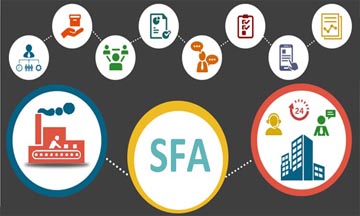
What is the Market Connect Problem of Brands?
Successful Brands need to constantly understand consumer preferences, serve their customers and align their offerings. To achieve this, Brands seek a close connect to their market. They know that this is the best chance of proactively aligning their offerings to customers and serve their markets.
Question is: Do the Brands have the effective tools to do so or is there a problem? This is what I have tried to analyze in this blog.
Channels
Let’s start with channels Brands use to get their products to their customers.
Customers buy thousands of different products from different Brands. It’s not feasible for them to use exclusive Brand channels even if they knew which Brand’s product they wish to buy. Of course, there are exceptions for Brands such as Airlines, Hotels, where purchases are frequent, high value, number of Brand options relatively limited and the product is well known to customers. There are other exceptions too, such as direct marketing companies such as Amway etc, but these are exceptions rather than the norm. For vast majority of Brands, including in Home maintenance and Building/Construction material industry, which is the focus of this blog, this is not the norm.
Figure: using direct purchase channels from multiple Brands is not feasible

So, of course, Brands must use the channels popular with customers:
- Superstores and retail chains, e.g. Walmart etc (not a common channel in India for Home maintenance and construction products)
- eCommerce aggregators, e.g. Amazon etc
- Retail markets and local stores- Unorganized retail.
As most of the Home maintenance, Building & Construction Material products (which is focus of this blog) are sold via retail markets and local stores, let’s stick to describing problem in this context.
‘Over the wall’ system
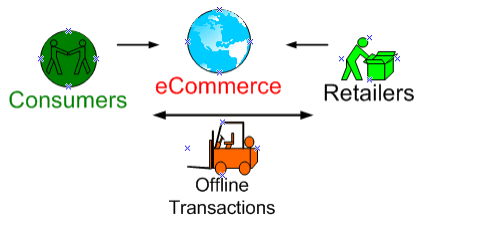
As above diagram indicates, the transactions take place between consumers and retailers, either completely offline (i.e. purchasing over a counter) or via some eCommerce channel. The only entities participating in the transaction are- the customer and the seller, and where eCommerce channel is involved, an eCommerce aggregator platform as well.
The retailer of course is selling the goods of the Brand, so let’s bring it in the picture:
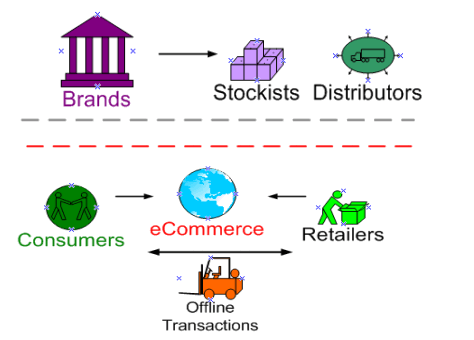
As above figure shows, there is an ‘over the wall’ system, where Brands keep the market well suppliedvia distributors who then throw it ‘over the wall’ to retailers to serve local consumers.
Tools Brand use to achieve ‘connect’
The problem with above system is that Brands are not participants of customer transactions, thus severely limiting their ability to understand consumer preferences, target customer profiles,serve/reward customers which is crucial for continuous product-market alignment.
Brands typically fill this gap by:
- Using field workforce: They can gather crucial customer feedback, deliver depth of messages, but cannot achieve the extent of market coverage. On average at best 20% of the market coverage is achieved by use of field workforce.
- Using mass advertising: Mass advertising has massive reach, however it cannot deliver depth of message required, and is usually one way communication. Thus, its more suited for creating Brand recall and association with a highly abstract message (e.g. safety, premium, cost etc)
One aspect common with both of above is that these are both resource intensive and high cost methods.
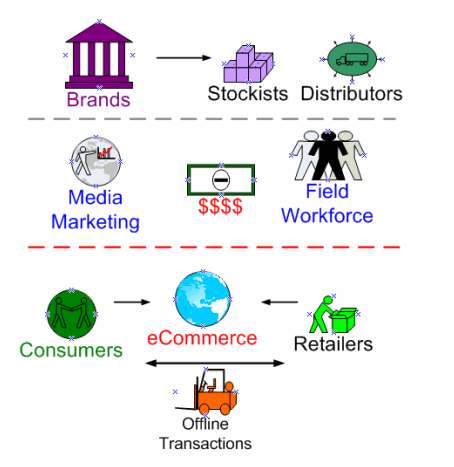
The unsolved problem with tools
Most Brands use both methods by allocating substantial marketing and sales budgets, however “EitherOr” problem of wider market reach and to deliver effective connect (in way of Loyalty rewards, support,service, eDetailing, understanding preferences etc) remains. This is as shown in the matrix below.
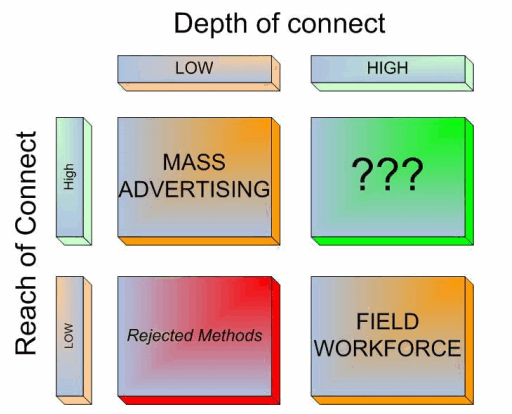
The box with ??? represents the aspirational approach that delivers both wider reach as well as ability to deliver engagement with customer. The fact that this is unidentified is what I refer to as the Market Connect problem of Brands.
Conclusion
In conclusion, I define Market Connect Problem as follows:
The channels Brands use to deliver their offerings to customers results in disconnected transactions- i.e. transactions that take place without any direct involvement of Brands. Brands use field workforce for deeper engagement AND mass advertising to achieve wider reach. However, despite high cost of the tools & methods used, Brands are still not able to achieve both wider reach and deeper engagement by using the traditional methods. Thus it leaves Brands unsatiated for want of more Market Connect.
I hope this served as some food for thought, as we often overlook it, simply because we have all got accustomed to traditional methods. But is there another way in this age of digitization?
Stay tuned…
- Anupam Ahluwalia.




